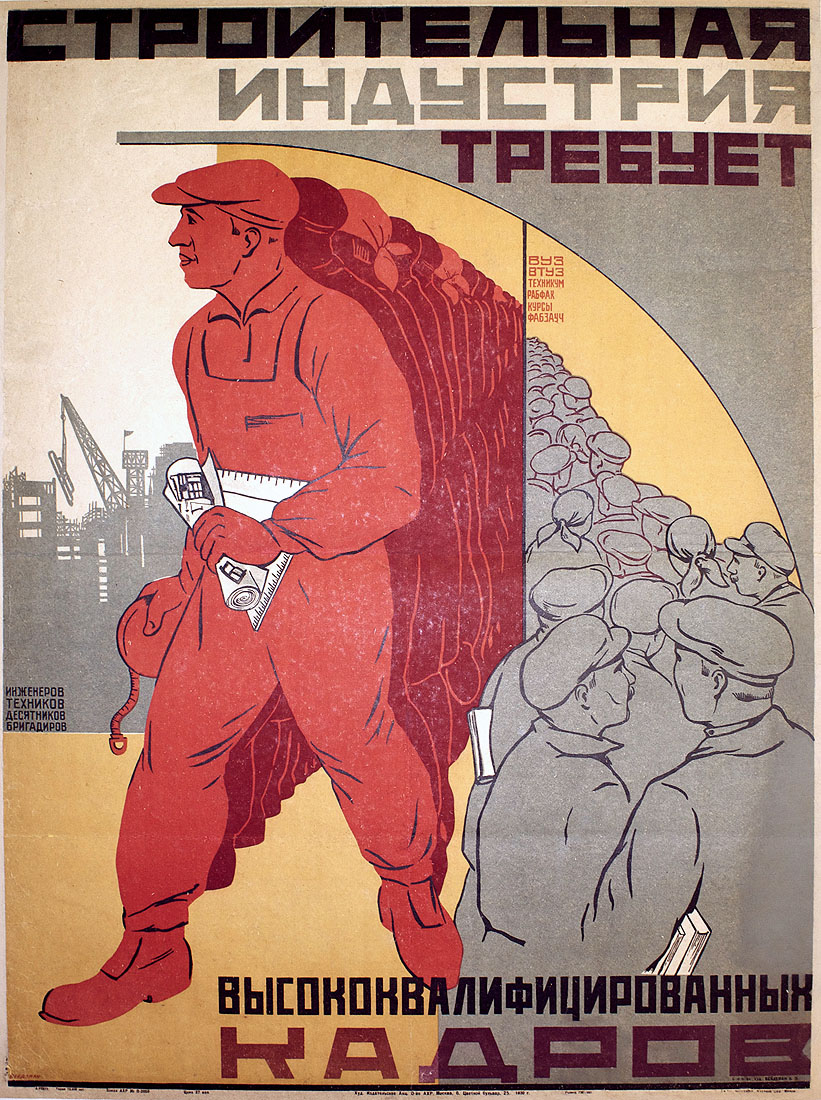
The Civil Engineering Industry Requires Highly Qualified Personnel.
Poster Number: PP 697
Category: Workers
Poster Notes:
[Small red text, right side of poster]
VUZ
VTUZ
College
RABFAK
Courses
FABZAUCH
[Small black text, left side of poster]
Engineers
Technicians
Desiatniks (Leaders of 10-man squads)
Foremen
Media Size: 40x29
Poster Type: Lithograph
Publishing Date: 1930
Technical Information on Poster: Order A.Kh.R. No. P 2050; Price 27 kopeks
Print Run: 15,000
Glavlit Directory Number: A-3377
Sources & Citation: Fitzpatrick, S. (1979). Education and social mobility in the Soviet Union, 1921-1934. Cambridge: Cambridge University Press. (Rabfak, Fabzauch, Vuz and Vtuz explained)
Catalog Notes: PP 697 Workers
Artist: Veideman, Karl Ianovich (Veidemanis, Kārlis) — Вейдеман, Карл Янович
Karl Ianovich Veideman (Karlis Veidemanis) was born in Latvia when it was part of the Russian Empire. In 1915 Veideman graduated from the Riga School for Painters and Decorators and then made his way to Petrograd (St. Petersburg). In Petrograd, he enrolled in the drawing school of OPKh (Society for the Encouragement of Artists) where he studied from 1915 to 1917. During the 1917 October Revolution, Veideman and fellow Latvian artists Gustav Klutsis (Gustavs Klucis), Vladimir Anders (Voldemar Anderson) ...
Read More About This Artist
Printer: Mospoligraf (Moscow Polygraphic), Moscow — Мосполиграф, Москва
Mospoligraf was a state-owned printing trust located in Moscow. When the Soviet Union formulated a plan in 1921 to consolidate the nation’s largest and best printing operators into state-owned trusts; Mospoligraf was organized in 1922 to carry out consolidation of the Moscow printing industry. With a staff of over two thousand, Mospoligraf was the second-largest printing trust organized in Moscow outside of the Mospechat’ trust, and it oversaw a myriad of houses under local printing sections such...
Read More About This Printer
Publisher: A.Kh.R. (Association of Artists of the Revolution) — А.Х.Р (Ассоциация Художников Революции)
The Association of Artists of the Revolution was an artist cooperative from 1928 to 1932. From 1922-1928 it was called the Association of Artists of Revolutionary Russia. During the 1920s, the Association rose to prominence in the Soviet art world. It opened branches throughout the USSR, and it operated its own publishing house in Moscow at 25 Tsvetnoi Boulevard. The Association was abolished in 1932 when the government centralized a majority of independent arts organizations in the USSR.
Read More About This Publisher